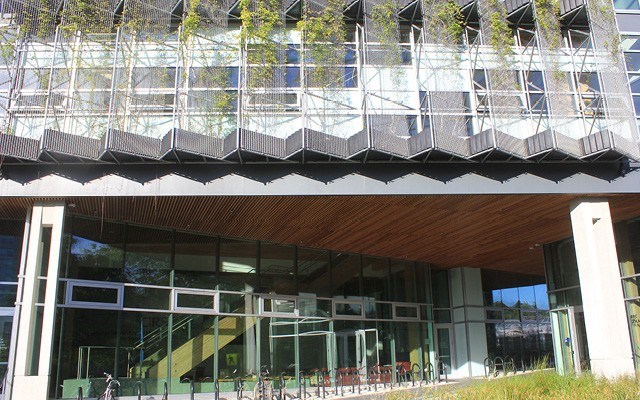When Norbert Klebl bought a 10-hectare parcel some years ago in a Denver suburb, he wasn't quite sure what he would do with it. Located in Arvada, population 115,000, the parcel is flanked by the automobile museum of author Clive Cussler and a new but conventional subdivision. A light industrial area lies across Ralston Creek, a mild-mannered waterway that originates a few kilometres away in the foothills of the Rocky Mountains.
Now, houses that may represent the future of home building in North America are emerging from the site, with the first four to be occupied in August. Klebl, a one-time petroleum engineer originally from Austria, is creating a net-zero energy subdivision of 300 single-family homes, condominiums and townhomes.
What's even more important is that he's doing this at middle-class price points and finding buyers in a community that tends to sit astride the political fence.
The pressure has been growing to create buildings that use energy and other resources more judiciously. California's legislature has mandated that all new homes in that state beginning in 2020 be net-zero capable. Hawaii, with extremely expensive energy and ambitious carbon-reduction goals, has great incentive for making homes more efficient.
In Vancouver, a model on the University of British Columbia campus debuted in 2011 that seeks to be a living laboratory for building sustainability. Called the UBC Centre for Interactive Research on Sustainability, it uses a multi-disciplinary approach to understand the relationships between buildings and their larger contexts.
On a recent tour, Alberto Cayuela, the director of operations and business development, said that the building aspires to become a net-zero structure next year. That goal, he said, "forces you to rethink your building and to rethink your energy systems."
A key feature is the use of pine trees from the interior of B.C. killed by bark beetles and compressed with resins to create a building material that can replace concrete and even steel, both of which require large amounts of fossil fuels to produce. Created 30 years ago in Europe the wooden product is now finding its way even into newer homes in Whistler.
Rethinking our buildings is absolutely crucial if we are to substantially reduce global greenhouse-gas emissions. Ed Mazria, of Architecture 2030, estimates that the world will build or remodel 900 billion square feet of real estate by 2030. That, he said, is 60 per cent of the entire building stock of the world.
"That is a huge opportunity if we do it right," he added in remarks at a 2013 conference. Of this new building, 58 per cent will be in China, the U.S., and Canada.
That leaves a lot of work for Vancouver and other cities. In downtown Vancouver, you can see the start of this rethinking with the Telus Garden, the one-million-square-foot building on Georgia Street. The building achieved LEED platinum, the highest level, by embracing of such technologies as triple-paned windows.
The residential housing sector will also have to be rethought. Change takes time. When Klebl presented his ideas to municipal planners in suburban Denver, they looked puzzled. They didn't know what net-zero meant. The city council approved the project in 2008, but at least some were skeptical. "The public isn't interested in that sort of thing," said one councillor in early 2010. That was during the real-estate recession, and nobody was building new homes then.
The bad economy may have done Klebl a favour. Since then, he says, people have become more accepting of the need to reduce greenhouse-gas emissions. But Klebl also figured out how to lower his costs. That is crucial if net-zero building is to make inroads into the vast American market with price points between US$200,000 and $500,000. He's found craftsmen who are willing to take the time to learn new techniques. The first unit will be real work, he tells them, but then you do the same thing again and again. He says he refused to work with any contractors over 40. They're too set in their ways.
Klebl himself is well past 40. After studying petroleum engineering in Austria, he got a master's degree in business administration from Columbia University in the mid-1960s. Working as a management consultant in New York City for several years, he then returned to Austria, where he managed a factory in Vienna. In 1990, he returned to the U.S. for good, moving to the university town of Boulder where he began to think about energy. His house was so drafty that it would ruffle the newspaper he was reading. One thing leads to another. Now, he can talk energy with anybody.
To achieve net-zero in the Denver suburb, Klebl uses both old ideas and new technology. Houses are oriented in ways that maximize solar gain, to reduce need for winter heating. The latest LED lights brighten kitchen counters. Ground-source heat pumps, which Klebl believes are crucial for maximum efficiency, draw on energy in winter for heating and during summer for cooling.
Klebl sees net-zero energy construction in British Columbia as more difficult not because of technology or climate. Instead, he says, hydroelectricity is so cheap that there's less market incentive to drive efficiency.




